Walking among the Redwoods
Standing amid America's natural wonders, one appreciates the century-long struggle to preserve them.
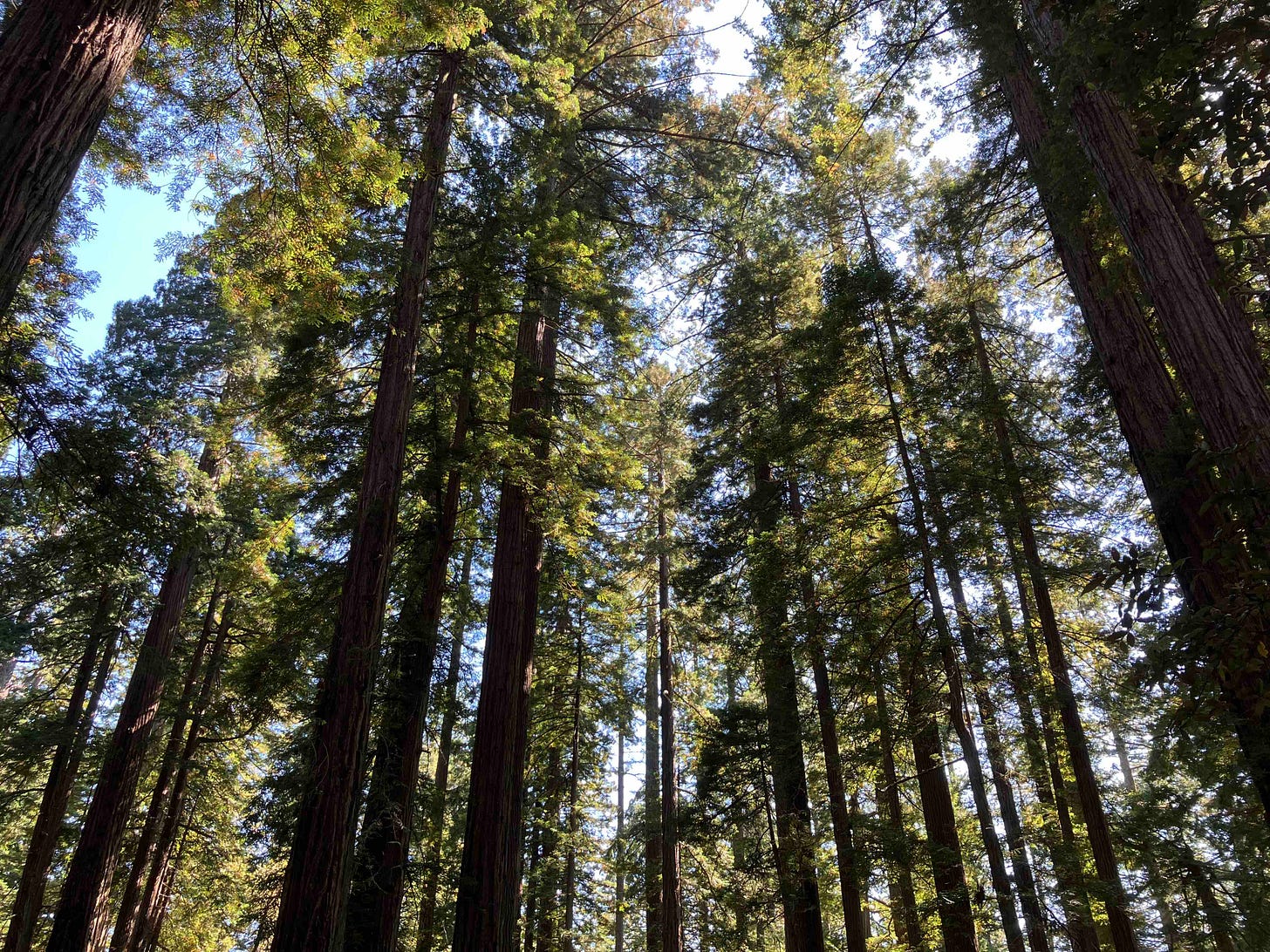
It’s been a tumultuous summer in the United States: an attempted presidential assassination in one political party; upheaval at the top of the ticket in another presidential party; two conventions; volatile financial markets; heat waves; hurricanes; demonstrations; foreign wars; an array of social media and artificial intelligence legislation; and battles over speech, disinformation, higher education and policy. So, this Labor Day my wife and I took a break to recenter ourselves by visiting the tallest—and among the oldest—living things on Earth: the Redwoods.
As a species, the California Redwoods date back to the Jurassic Era some 160 million years ago. While walking amid their shadows, one can imagine a giant Brontosaurus stomping through the forest, craning its neck to munch on the leaves above. The trees have thrived along the California coast for at least 20 million years, with a single tree living on average for 500 to 700 years, and some living as long as 2,000 years. They have evolved a thick, multi-layered bark that is impervious to fire and insects, and have no known fatal diseases. A single tree can grow taller than the Statue of Liberty.
The Redwoods once spanned 2 million acres; yet today there are only 116,000 acres remaining. More than 95 percent of California’s Redwoods were destroyed in less than a century, as a Gold Rush in 1850 gave way to a timber rush in the latter part of the 19th century. By 1890, commercial logging had become California’s most lucrative industry, and sawmills proliferated up-and-down the west coast. Private corporations decimated the forest woods to build houses, roof shingles, railroad ties and fences for fast-growing markets across the country. In 50 years, industry destroyed nearly all of the forests that had stood for millions of years.
Had it not been for the tireless work of activists in the early 20th century—specifically women activists—there would be no redwoood forests for us and thousands of visitors to escape to. This Labor Day, I gained a new appreciation for those histories, and I thought I would use this week’s newsletter to share it with you.
The first known peoples to live among the Redwoods were not of European descent but rather ancient civilizations. At least 12 groups lived in proximity to the forest, with seven claiming ancestral lands, including the Yurok, Tolowa and Chilula peoples. Evidence indicates these groups used the Redwoods that fell during storms or had died naturally to build canoes and lodgings. Their mark on the forests were minimal.
That would change with the arrival of European explorers and, later, American settlers. The first Europeans to arrive were Spanish and English navigators who remarked on the beauty and size of the Redwoods and laid claim to various sections in the names of their crowns. By 1848, the United States had seized control of California via the Mexican-American War, paving the way for statehood. It was also in that year that gold was discovered near Sacramento.
A frenzied gold rush ensued, and with it excavation and exploitation of California’s natural resources. As Congress granted federal lands to the new state for it to sell in order to finance its growth and development, speculators and corporations swooped in to stake claims, extract water, wood and minerals, then leave. This pattern repeated itself across California for decades.
According to Laura and James Wasserman in their book Who Saved the Redwoods, by 1890 private interests owned nearly all the redwoods in California and monopolies controlled the prime of the redwood belt. At one point, 33 owners held 79 percent of prime redwood timberland. The majority of ownership resided in Eastern or Southern states, as well as overseas. The California Redwood Company, for example, which controlled 65,000 acres, was largely owned by Scottish investors, which eventually led to a fraud investigation in federal court.
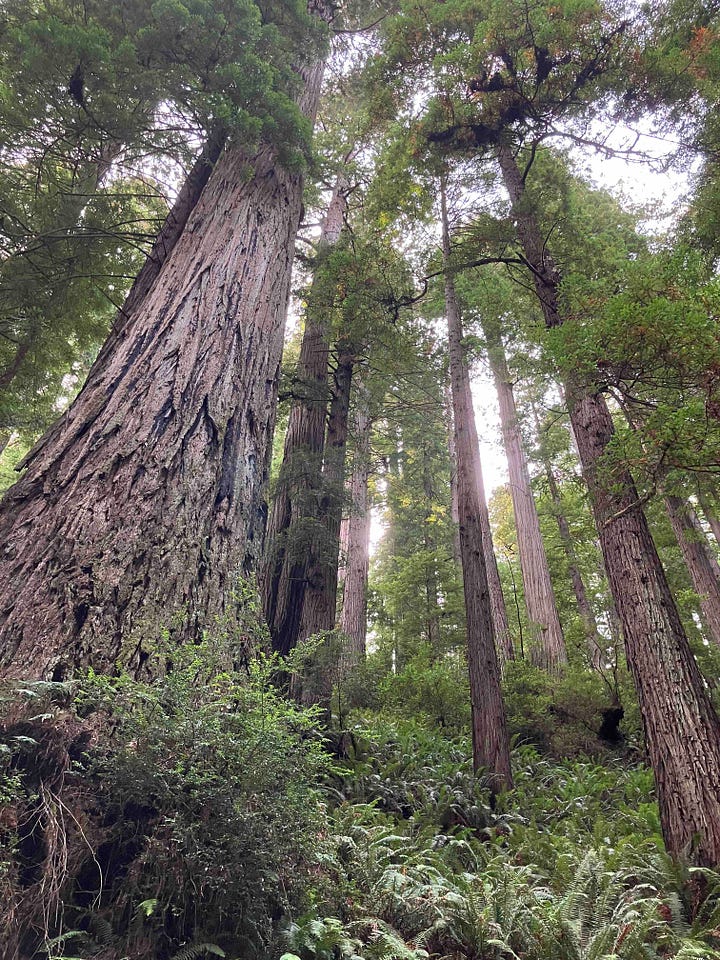
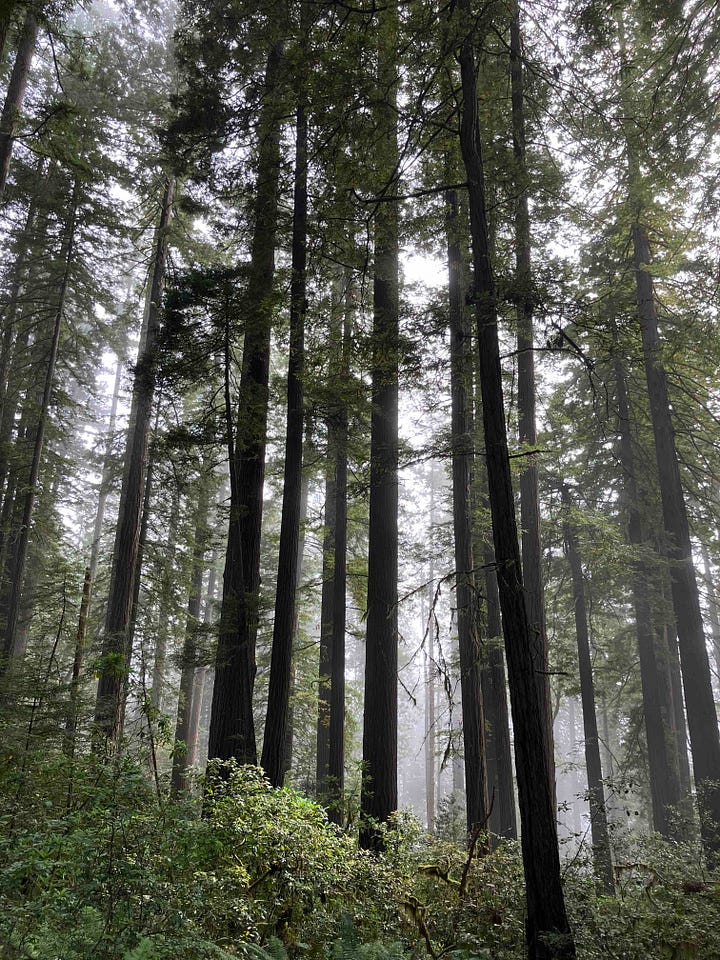

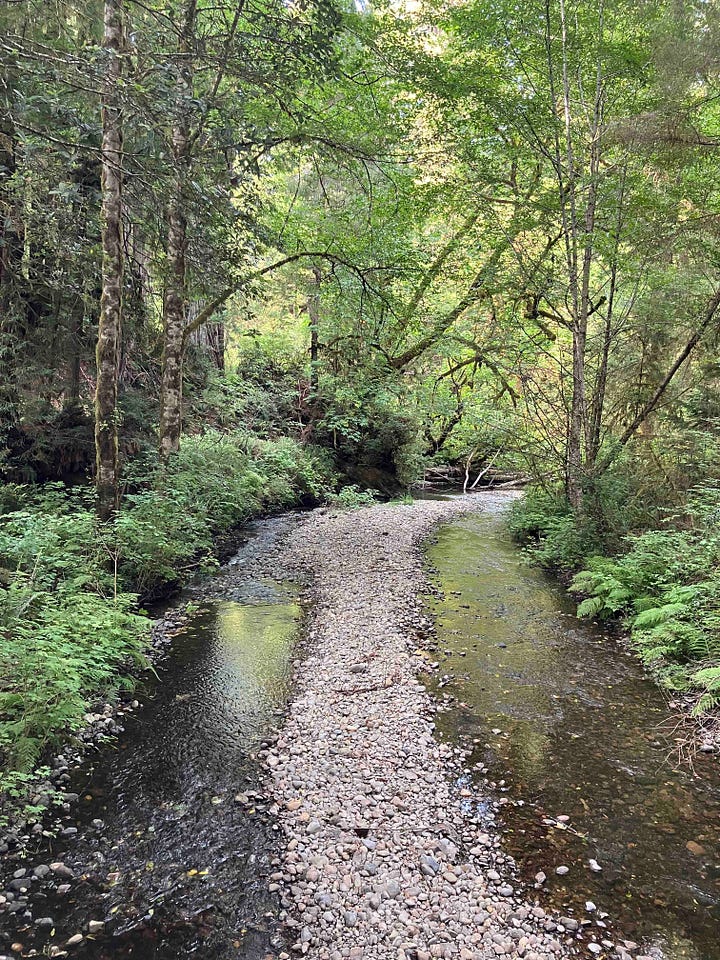
As early as 1900, California residents were appalled by the rampant destruction of the majestic and primeval forests around them. Prominent citizens began to lobby to “save the Giant Redwoods.” An essay published that year in the San Francisco Call, the leading Republican newspaper in San Francisco, pleaded:
“When the Anglo-Saxon pioneer first penetrated into the Santa Cruz Mountains he saw around him vast wastes of forest verdure—a wilderness ocean… Redwoods rose in stately ranks, their giant columns bare until they reached the height of ordinary trees: above that they put forth luxuriant foliage… a half century has witnessed the gradual denuding of these mountains, until now only a few sections remain whose original beauty has been untouched by ax or fire… in many sections the traveler sees only a parched and barren expanse, stumps, burned logs, the dry beds of streams, and a general aspect of desolation… Nature has placed a vast sanitarium almost at our doors, but man is despoiling it year by year.”
These words were penned by Louise Coffin Jones, president of the San Jose Woman’s Club. As early as 1900, she was one of several prominent California women who wrote and spoke publicly to sway public opinion against the timber and water companies and towards the creation of a national or state park. Jones and her allies formed what they called the “Sempervirens Club,” sequoia sempervirens being the species name given to the Redwoods by 19th century botanists. She and other women wrote to Members of Congress asking that the remaining Redwoods be protected.
Their efforts began to bear fruit in 1902. That year, the state’s California Redwood Park Commission initiated the purchase of California Redwood Park in Santa Cruz and San Mateo counties. The commission included two representatives from industry, as well as a professor from Stanford University and the president of Santa Clara College. The tract was bought from the Big Basin Lumber Company, who finally ceded the land in 1906.
By 1904, influential women from the San Francisco Bay Area had organized to purchase more forest, this time owned by the North Coast Water Company, which was under pressure from its shareholders to sell the land to another private entity. A key organizer and advocate was Alice Eastwood, who worked as a curator at the California Academy of Sciences. She and others spearheaded a drive to raise $80,000 to buy the land, “avert destruction” and create a “public reserve.” As it was reported in the San Francisco Call in November of that year:
“The primeval forest of redwoods in Marin County is to be preserved. The towering trees are to be spared the ax that has threatened them. No lumberman keen for profit shall invade the jungle, no chips nor sawdust will pollute the silvery stream that ripples down the narrow canyon. One of the most beautiful of California’s wonderlands is to be retrieved from the speculator and maintained in all its natural grandeur. The women of San Francisco have so willed.”

Despite these efforts, destruction continued into the early 20th century, particularly in-and-around World War I. The surging demand for home construction, railroad ties, and vineyard spokes accelerated the pace of logging. With it, a concerted environmental protection and conservation movement took hold, continually led by women—not solely adults but also adolescents. In 1911, the Call featured short stories by young junior writers, including a story called “The Fall of the Redwoods” by Lauretta Johannsen, which read in part:
“Mother Nature, when she was making her home in northern California, decided that she would like some pillars in her halls and so created some beautiful redwood trees… [the] redmen saw how wonderful were the great trees and they knew some being, greater by far than themselves, had made them. They stood in awe of them and never harmed them. Gradually the white man conquered the nature worshipping redman and, not satisfied with driving the poor savages from their homes, they began destroying their gods. They ruthlessly felled the great kind trees and left the hills bare…”
Among the women’s clubs of the early 20th century, forestry and conservation emerged as leading priorities. In addition to the Sempervirens Club, women-led organizations such as the California Federation of Women’s Club, The Garden Club of America, and the Save the Redwoods League all formed to advocate for the creation of state and national parks. Women such as Carrie Stevens Walter, Josephine Clifford McCrackin, and Laura Lyon White led rallies and repeatedly lobbied Presidents McKinley, Roosevelt and Wilson, as well as federal and state elected officials. One woman even stood in front of a tree to block a timber company while her husband filed a lawsuit in court.
By the 1920s, three California redwoods state parks had been established: Prairie Creek (1923), Del Norte (1925) and Jedediah Smith (1929). It would take another forty years for Redwood National Park to be created in 1968, expanded in 1978. Since the 1990s, the site has been designated a World Heritage Site and Biosphere Reserve. Today, the parks welcome 500,000 visitors per year from around the world.
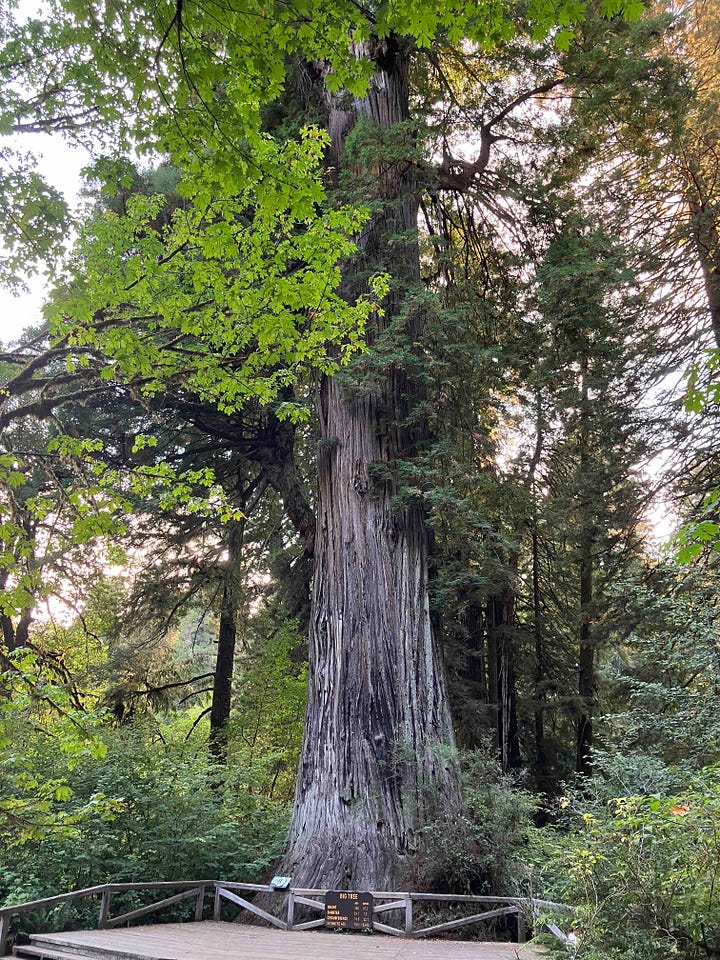
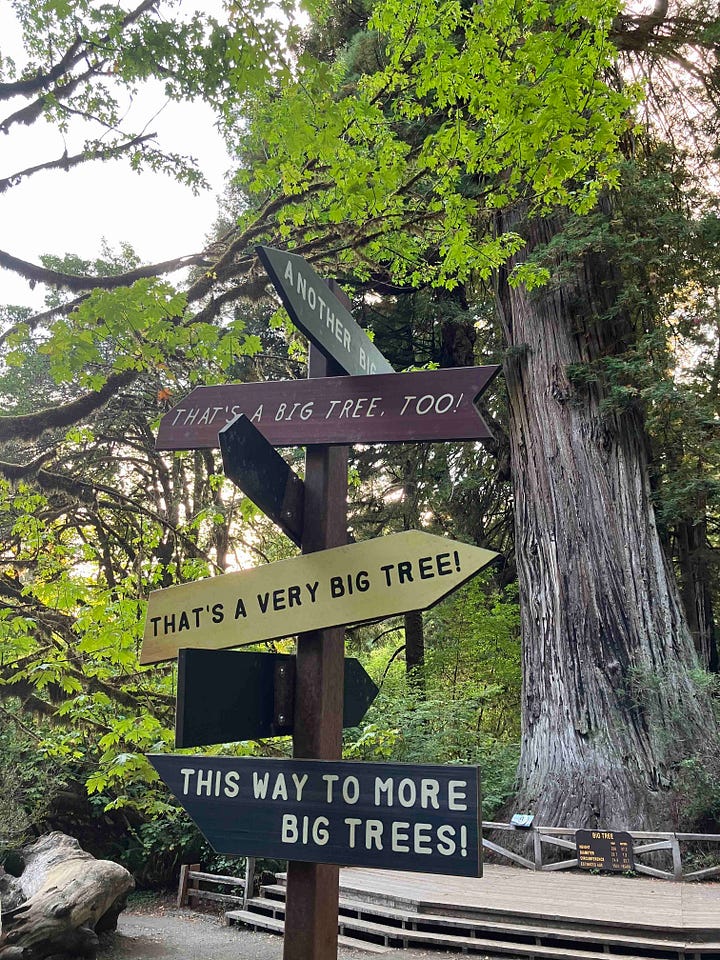
Prior to this weekend, my only experience with the Redwoods had been to see them in photographs or movies. Suffice it to say, the images do not do them justice. The trees are majestic, and when kissed by the morning mist of the Pacific Ocean and tickled by the California sunshine they create picturesque scenes that no man or machine (or A.I.) can replicate. Walking on the paths that grace their forest floors, I was particularly struck by the silence. Even with other tourists present, around corners and in crevices one could find pockets of a silence that simply do not exist in even the quietest corners of New York, Washington, or San Francisco. It is a reverent silence, one that allows the brain to turn off its internal distractions and contemplate a higher purpose, interrupted only by a distant breeze or rustle.
Groups of women (and men) of the early 20th century had the foresight to fight for such spaces. Their labors are not the ones we typically recognize on Labor Day; yet America and the world owes them a debt of gratitude. Still, when traveling through the parks today, it is noticeable how absent their stories are. A few markers in select places briefly mention their work (information about them is also on the National Park website). In parts of California, and among environmental activists, their stories may be known, but to the larger world the efforts of 100 years ago remain mostly invisible. The results may be that we are tempted to believe that environmentalism and conservation are only recent phenomena, and that local civic action can never succeed against larger corporate forces. Both are fictions that these histories disprove.

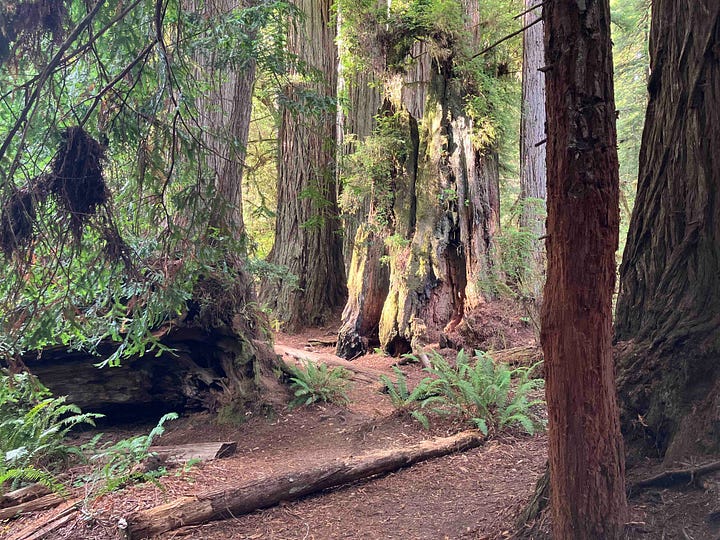
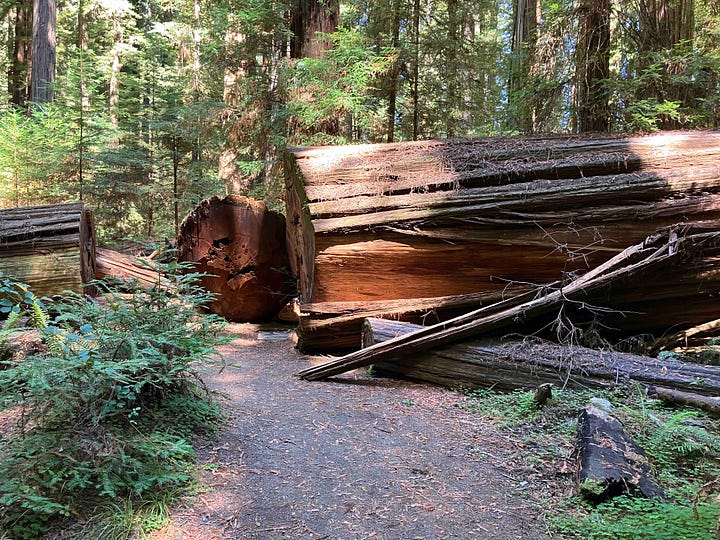
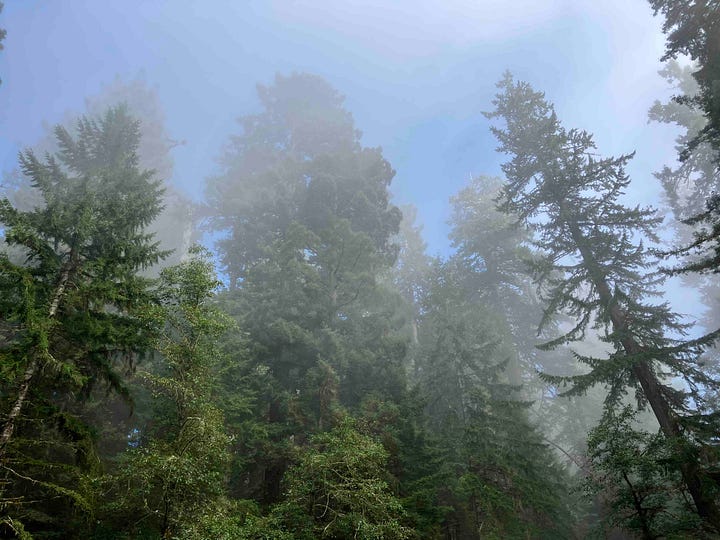
At the 1904 meeting where Alice Eastwood spoke, another speaker was the poet Charles Keeler. Keeler hoped the redwoods would be saved for posterity as “a great temple where beauty worshipers might find happy hours.” During his remarks, Keeler also said:
“The greatest need of the world to-day… is wholesome, hearty sentiment for good things and beautiful things.”
The Redwoods are both a good and beautiful thing, and sorely needed today as we drown in a flood of data, digital devices and screens. Thanks to the labor of women and men who came before us, the Redwoods remain a wholesome and hearty refuge for beauty, contemplation and reflection in a world that sorely needs all three. The responsibility now passes onto us to maintain them for future generations who will also need the timeless beauty these majestic forests offer. We have an obligation to ensure such a refuge exists for those who come after us, just as was done for us a century ago.
Have a beautiful and contemplative week,
-JS
P.S. – In case you missed it, also in August the National Park Foundation announced a $100 million gift from the Lily Foundation Inc. These funds will help ensure that our national parks are protected, and that their histories can be more fully told.




Remarkable story. Thanks for telling it so beautifully.
Oddly enough, since the 1980s in my neighborhood in California, residents have planted redwoods as ornamental trees. It's not a problem today, but at some point in the future it's going to look awfully strange, and wonderful. Nice article.